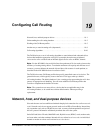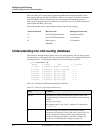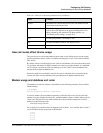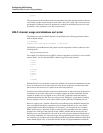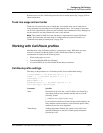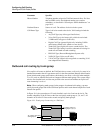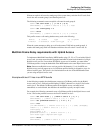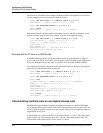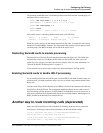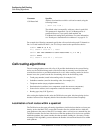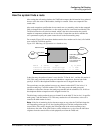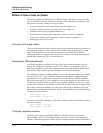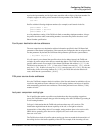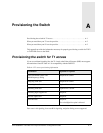
19-8 Preliminary May 9, 2000 APX 8000/MAX TNT/DSLTNT Physical Interface Configuration Guide
Configuring Call Routing
Working with Call-Route profiles
The next set of commands creates another Call-Route profile for the Hybrid Access card and
sets the preferred source to the second E1 interface in slot 2:
admin> new call-route { { { shelf-1 slot-3 0 } 0 } 2 }
CALL-ROUTE/{ { { shelf-1 slot-3 0 } 0 } 1 } read
admin> set preferred-source = { { 1 2 2 } 0 }
admin> write
CALL-ROUTE/{ { { shelf-1 slot-3 0 } 0 } 2 } written
Note that the default Call-Route profile for the Hybrid Access card was not modified. It still
specifies a general route for the card as a whole, as shown in the following listing:
admin> get call-route { { { shelf-1 slot-3 0 } 0 }0}
[in CALL-ROUTE/{ { { shelf-1 slot-3 0 } 0 } 0 }]
index* = { { { shelf-1 slot-3 0 } 0 } 0 }
trunk-group = 0
phone-number = ""
preferred-source = { { any-shelf any-slot 0 } 0 }
call-route-type = digital-call-type
Example with six E1 lines in an MFR bundle
If the MFR bundle aggregates enough bandwidth to utilize all of the channels on a Hybrid
Access card (up to 186, or six E1 lines), you can create a single Call-Route profile mapping the
E1 card to the Hybrid Access card. Only six of the E1 lines are usable for MFR, however.
For example, the following commands modify the default Call-Route profile to specify the E1
card in slot 2 as the preferred source for the card:
admin> read call-route { { { shelf-1 slot-3 0 } 0 } 0 }
CALL-ROUTE/{ { { shelf-1 slot-3 0 } 0 } 0 } read
admin> set preferred-source = { { 1 16 0 } 0 }
admin> list
[in CALL-ROUTE/{ { { shelf-1 slot-3 0 } 0 } 0 } (changed)]
index* = { { { shelf-1 slot-3 0 } 0 } 0 }
trunk-group = 0
phone-number = ""
preferred-source = { { shelf-1 slot-16 0 } 0 }
call-route-type = digital-call-type
admin> write
CALL-ROUTE/{ { { shelf-1 slot-3 0 } 0 } 0 } written
Concentrating multilink calls on one Hybrid Access card
Multilink calls that add channels dynamically might inadvertently use channels distributed
across multiple Hybrid Access cards, which causes a performance penalty for those calls. You
can use Call-Route profiles to direct the system to route calls received on a particular trunk to a
single Hybrid Access card.
In this example, the system has three T1 cards installed in slots 1, 2, and 3. Slot 1 uses trunk
groups 4 and 5, slot 2 uses trunk groups 6 and 7, and slot 3 uses trunk groups 8 and 9. The
system also has three Hybrid Access cards, in slots 4, 5, and 6.




